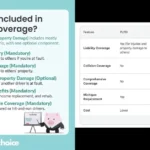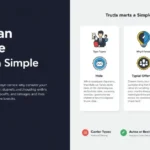The tip screen is transforming how customers show appreciation for services in the digital age. Whether in restaurants, ride-sharing apps, or food delivery platforms, this intuitive feature simplifies the tipping process, enhancing customer experience and boosting service workers’ earnings. In this comprehensive guide, we’ll explore how the tip screen works, its benefits, and why businesses are rapidly adopting it.
What Is a Tip Screen?
A tip screen is a digital interface that prompts customers to add a gratuity after completing a transaction. Unlike traditional cash tips, this automated system ensures transparency, convenience, and faster payouts for service providers. The tip screen appears on POS systems, mobile apps, and self-service kiosks, offering preset tip percentages or custom amounts.
How Does a Tip Screen Work?
-
Transaction Completion – After payment, the tip screen pops up.
-
Tip Selection – Customers choose a preset percentage or enter a custom tip.
-
Confirmation – The tip is processed digitally and transferred to the worker.
This frictionless process eliminates awkwardness, speeds up transactions, and increases tip amounts.
Why Businesses Are Adopting Tip Screens?
1. Increased Earnings for Workers:
Studies show that digital tip screens lead to higher tips compared to cash or manual methods. The convenience encourages customers to tip more generously.
2. Improved Customer Experience:
A seamless tip screen reduces checkout friction, making tipping effortless. Customers appreciate the flexibility to tip without carrying cash.
3. Better Tip Tracking & Transparency:
Digital tips are recorded automatically, helping businesses track earnings and distribute them fairly among employees.
4. Encourages Higher Tip Amounts:
Preset options (e.g., 15%, 20%, 25%) nudge customers toward higher tips, benefiting service staff.
Tip Screen vs. Traditional Tipping: A Comparison
| Feature | Tip Screen | Traditional Tipping |
|---|---|---|
| Convenience | Instant, digital prompts | Requires cash or manual entry |
| Transparency | Automated tracking | Manual record-keeping |
| Tip Amounts | Higher due to presets | Often lower or inconsistent |
| Speed | Faster transactions | Slower, dependent on cash handling |
| Adoption | Growing in digital payments | Declining as cash use drops |
Best Practices for Implementing a Tip Screen:
1. Optimize Placement & Timing:
Display the tip screen’s right after payment but before the final confirmation to maximize engagement.
2. Offer Customizable Options:
Include preset percentages (e.g., 15%, 20%, 25%) and a custom tip field for flexibility.
3. Keep the Design Simple:
A clutter-free tip screen improves usability and encourages tipping.
4. Train Staff on Its Benefits:
Employees should understand how the tip screen’s works to guide customers effectively.
Future of Tip Screens in the Service Industry:
As cashless transactions rise, the tip screen’s will become a standard feature across industries. Innovations like AI-driven personalized tip suggestions and blockchain-based tip tracking could further enhance this technology.
Conclusion:
The tip screen is revolutionizing gratuity by making tipping easier, faster, and more rewarding for both customers and workers. With its ability to increase earnings, improve transparency, and enhance user experience, businesses that adopt this technology will stay ahead in the competitive service industry.
FAQs:
1. What is a tip screen’s?
A digital interface that prompts customers to add a tip after a transaction.
2. Do tip screens increase tips?
Yes, studies show digital prompts lead to higher and more consistent tips.
3. Where are tip screen’s commonly used?
Restaurants, ride-sharing apps, food delivery, and retail POS systems.
4. Can customers skip the tip screen’s?
Yes, most systems allow customers to bypass tipping if they choose.
5. Are digital tips taxable?
Yes, digital tips are recorded and subject to taxation like cash tips.
6. How do businesses benefit from tip screens?
They improve employee earnings, customer satisfaction, and operational efficiency.
By integrating a tip screen’s, businesses can modernize gratuity, ensuring a win-win for customers and service professionals alike.











